Historic Home Renovation Costs in Philadelphia
Renovating a historic home in Philadelphia costs more—but when done right, it adds lasting value, stability, and function to every square foot.
6 min read
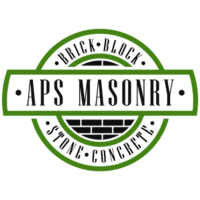 Alec Serowatka
:
Jun 4, 2025 10:16:38 AM
Alec Serowatka
:
Jun 4, 2025 10:16:38 AM
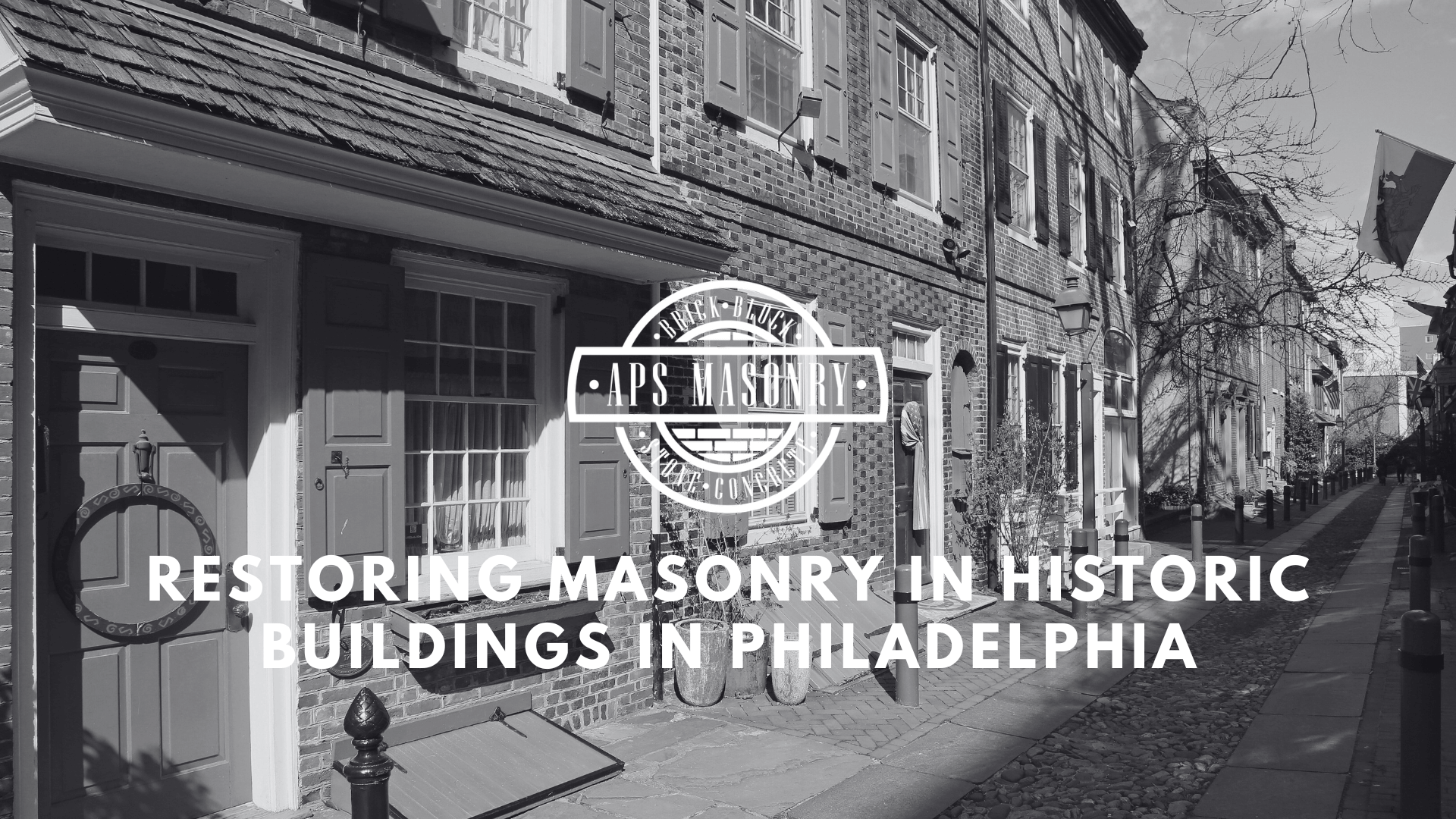
Restoring masonry in historic buildings in Philadelphia does more than protect the exterior—it brings structure, story, and value back into alignment.
From the worn mortar of pre-1900 rowhomes to the settling brick of corner twins in Queen Village, these properties hold unique character worth preserving. The original brick, stone, and lime mortar used in historic homes require restoration work that respects both form and function.
At APS Masonry Contracting, we specialize in masonry restoration and facade restoration that stabilizes aging walls while maintaining the surface patina that defines each building’s era. Our team understands the importance of historic preservation, especially in neighborhoods where construction before 1920 is the rule—not the exception. We’ve completed several projects across Philadelphia, where stone pointing and repointing restored structural integrity without compromising original materials.
This is restoration with purpose—repair that adds life, retains value, and preserves the city’s shared heritage one building at a time.
Historic homes across Philadelphia weren’t built with modern materials. They rely on traditional lime-based mortar, soft-fired brick, and layered stone assemblies that were never meant to last indefinitely without maintenance. Over time, that original masonry weathers, shifts, and separates. Without targeted restoration, this process reduces structural integrity and opens the door to deeper damage inside the wall.
Restoring historic masonry corrects these weaknesses before they lead to larger failures. When mortar breaks down, it transfers stress to the surrounding stone or brick. That shift causes misaligned door frames, vertical cracks, or step cracks along the wall. Left untreated, these issues move from cosmetic to structural—requiring heavier, more invasive repair down the line.
Historic masonry restoration reverses this pattern. When repointing restores those failed joints with breathable, flexible material, it protects both stability and surface character. Done properly, it can extend the life of a wall system by 40 years or more while avoiding expensive internal reconstruction.
This work isn’t aesthetic filler—it’s how homeowners preserve market value, resist weather-related damage, and keep their property strong without altering its appearance.
Planning a historic restoration? APS Masonry Contracting specializes in every phase of your masonry restoration project—from stabilizing historic brick to rebuilding full facades. We provide a detailed proposal for every job, built around the specific needs of your property and the architectural integrity of your home.
At APS Masonry, every historic building restoration project starts with a full inspection of the brickwork, mortar condition, joint depth, and wall movement. We don’t apply surface fixes. We repair the original system using historically accurate materials, tested processes, and experienced hands.
Our team specializes in stone pointing for older stone walls and foundations. This involves carefully grinding out deteriorated joints and packing in fresh, flexible mortar that allows the stone to breathe while maintaining a watertight seal. On brick homes, our brickwork crews rebuild or realign damaged sections and repoint where mortar has failed, matching the joint width, color, and composition of the original construction.
Masonry repair goes beyond filling cracks. We reinforce corners, stabilize shifted walls, and restore decorative patterns that were part of the home’s original design. Every element—from joint tooling to cleaning—is selected to preserve character while improving performance.
This is restoration that adds structure, extends lifespan, and respects the craftsmanship of the past.
Restoring a historic building in Philadelphia protects irreplaceable architecture, extends structural life, and increases real market value.
According to data from the National Trust for Historic Preservation and Philadelphia Historical Commission case studies, homes in designated historic districts typically see a 14–23% higher market value compared to non-restored or unmaintained counterparts. In neighborhoods like Society Hill and Queen Village, restored historic brick homes regularly list for $75,000–$150,000 more than similar properties with visible deterioration or modern patchwork repairs.
The math is simple. A high-quality masonry restoration project—including repointing, stone pointing, and facade repair—typically ranges from $12,000 to $25,000, depending on size and scope. But full structural replacement after prolonged neglect—especially if water infiltration and cracking spread—costs $50,000 to $100,000+, and in some cases may lead to permit challenges, delays, or disqualification from historic protections.
Beyond dollars, the loss is cultural. Every original lintel, hand-cut stone, or mortar line tells a story of pre-war craftsmanship. Historic restoration preserves those details. When left to decay, these elements disappear—not just from one property, but from Philadelphia’s shared streetscape. That’s more than aesthetic—it’s erasure of physical history.
This work honors the past while protecting future ownership. It secures the structural integrity of buildings that still serve their purpose, and it lets homeowners pass something real—something made to last—onto the next generation.
Every historic facade in Philadelphia tells a different story—arched lintels in Society Hill, Flemish bond brick in Germantown, fieldstone facades in Mt. Airy. These aren’t decorative layers, they are structural systems, built by hand, now aging in place. Preserving them requires more than filling gaps. It takes precision, memory, and respect for the original form.
Our facade restoration process begins with a visual and tactile assessment—what has shifted, what’s holding, what’s failing. We don’t guess. We test mortar composition, examine settlement patterns, and match original brick and stone units using archived samples when available. Historic brick often varies in density, shape, and finish; we source or shape materials to replicate those details without introducing modern substitutes that disrupt the pattern or tone.
Where decorative elements are missing, we rebuild. Where lines have softened, we cut crisp returns. Where corners lean, we reset and stabilize. All of this is done with traditional techniques adapted for long-term durability. The result is a wall that looks right, functions better, and stays stable through freeze-thaw cycles, urban pollution, and time.
Historic masonry fails when incompatible materials or modern shortcuts are used. We’ve seen the damage firsthand—and here’s exactly what happens when new construction techniques are applied to old buildings:
Rigid Concrete Mortar Cracks Historic Brick
Modern mortars are too dense. When used in place of original lime-based joints, they create pressure points. We've replaced dozens of cracked bricks in 100-year-old facades after they were repointed with Portland cement.
Moisture Gets Trapped Behind Sealed Surfaces
New sealants and cement coatings trap moisture inside the wall. One Society Hill rowhome we restored had interior plaster peeling and brick separation caused by an acrylic-based coating applied five years earlier.
Stone Faces Begin to Shear or Spall
In older stone buildings, improper joint materials hold water against the face of the stone. Over time, that moisture freezes, expands, and fractures the surface. We’ve had to remove entire veneer layers that failed due to this mistake.
Surface Appearance Gets Destroyed by Tooling Errors
Modern joints are often too wide, too deep, or too smooth. They don't match the original texture or scale. This not only ruins the visual appeal—it signals inexperience and can void historic designation for some properties.
Our team restores masonry using traditional methods because that's what historic buildings require. Every material, every tool, and every technique is chosen based on what will extend the building’s integrity—not compromise it.
We’ve completed restoration work across neighborhoods that reflect the full range of Philadelphia’s architectural history. From turn-of-the-century brownstones in Rittenhouse Square to Wissahickon schist homes in Mt. Airy, our team brings site-specific experience to every project.
In Germantown and Chestnut Hill, we’ve restored historic brickwork with lime-based mortar that matches the original profile and patina. On the Main Line, we’ve repointed stone chimneys and stabilized foundation walls using preservation-grade materials. We’ve worked on mixed-use commercial structures in Graduate Hospital and rebuilt facade sections on twin homes in Manayunk and Roxborough.
Each of these jobs required different techniques, materials, and sequencing. What stays consistent is our approach—thorough inspections, detailed proposals, and craftsmanship that respects both the building and its history.
Whether the site is a brick rowhome in Glenside, a colonial property in Cheltenham, or a stone estate in Villanova, we treat every masonry restoration project with the same priority: preserving structure, honoring detail, and extending the building’s life without compromise.
Restoring a historic property takes more than tools—it takes experience, restraint, and deep respect for what came before. At APS Masonry Contracting, we don’t rush to replace or cover. We rebuild, reinforce, and restore with purpose. Every historic restoration we take on is approached with one goal: bringing the building back to its former glory while keeping its structure sound for the future.
We’ve worked on properties referenced by the Preservation Alliance, and we understand the expectations that come with maintaining protected architecture. Our crews are trained to identify where traditional methods are required and where carefully selected upgrades can improve long-term durability.
We never use off-the-shelf solutions—especially not concrete mixes that overpower original brick or stone. Our materials are chosen for compatibility, breathability, and preservation. Concrete has a role, but not when it damages a 130-year-old facade.
When you hire APS, you hire a team with real expertise in historic restoration—hands-on, detail-focused, and committed to getting the work done right the first time. Contact us today!
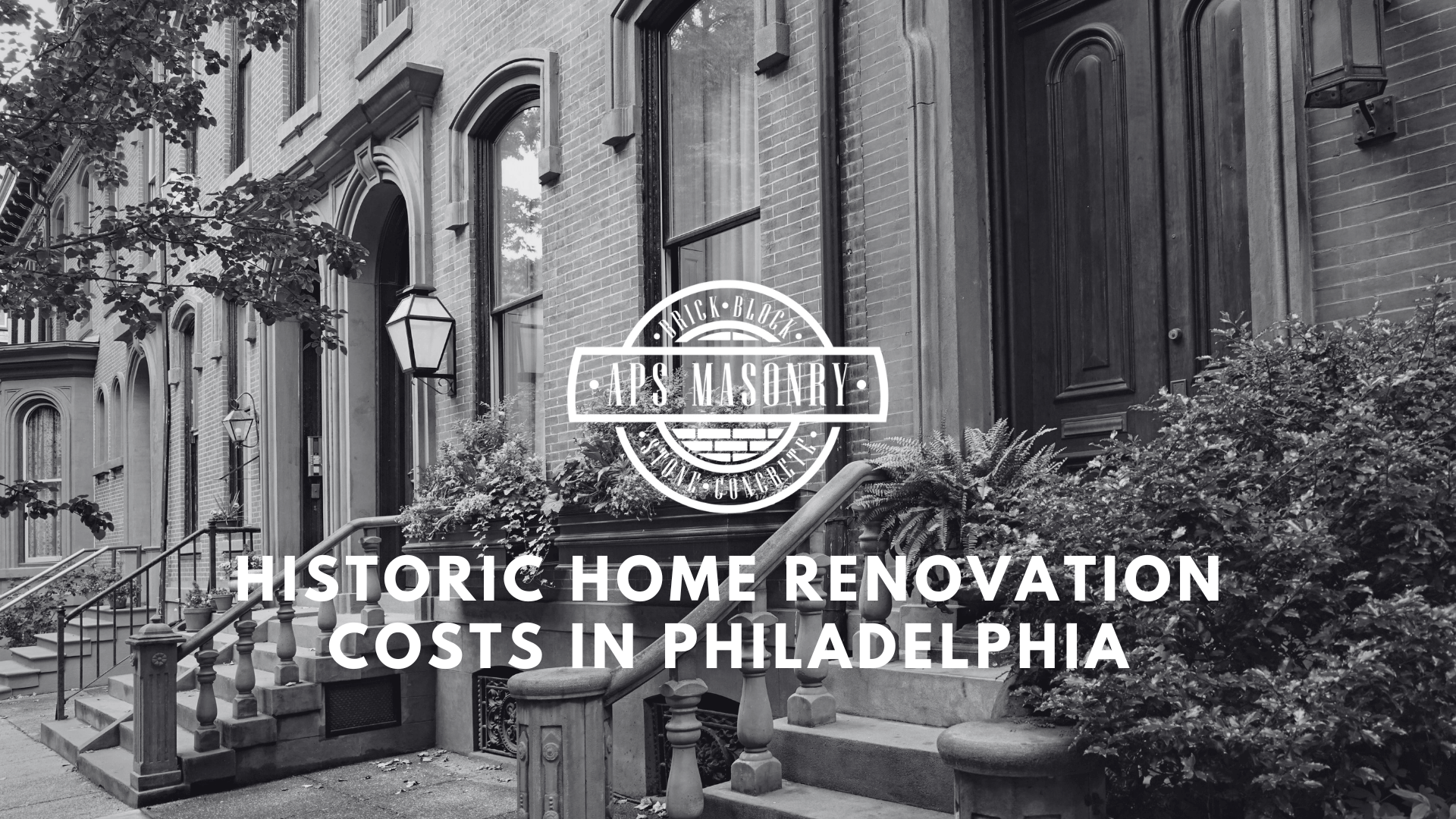
Renovating a historic home in Philadelphia costs more—but when done right, it adds lasting value, stability, and function to every square foot.
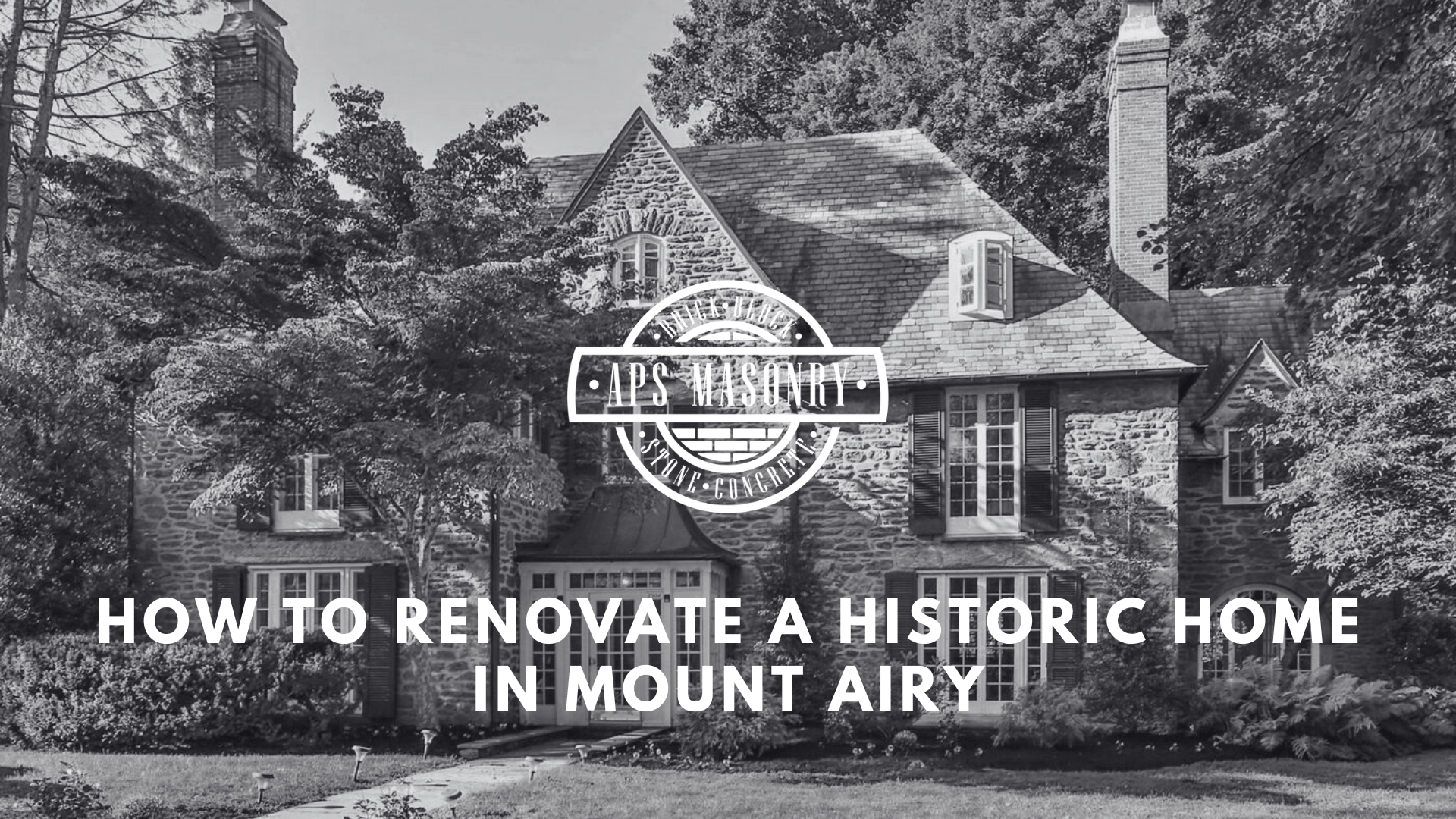
Historic home renovations in Mount Airy require expertise, planning, and respect for original details and community character.
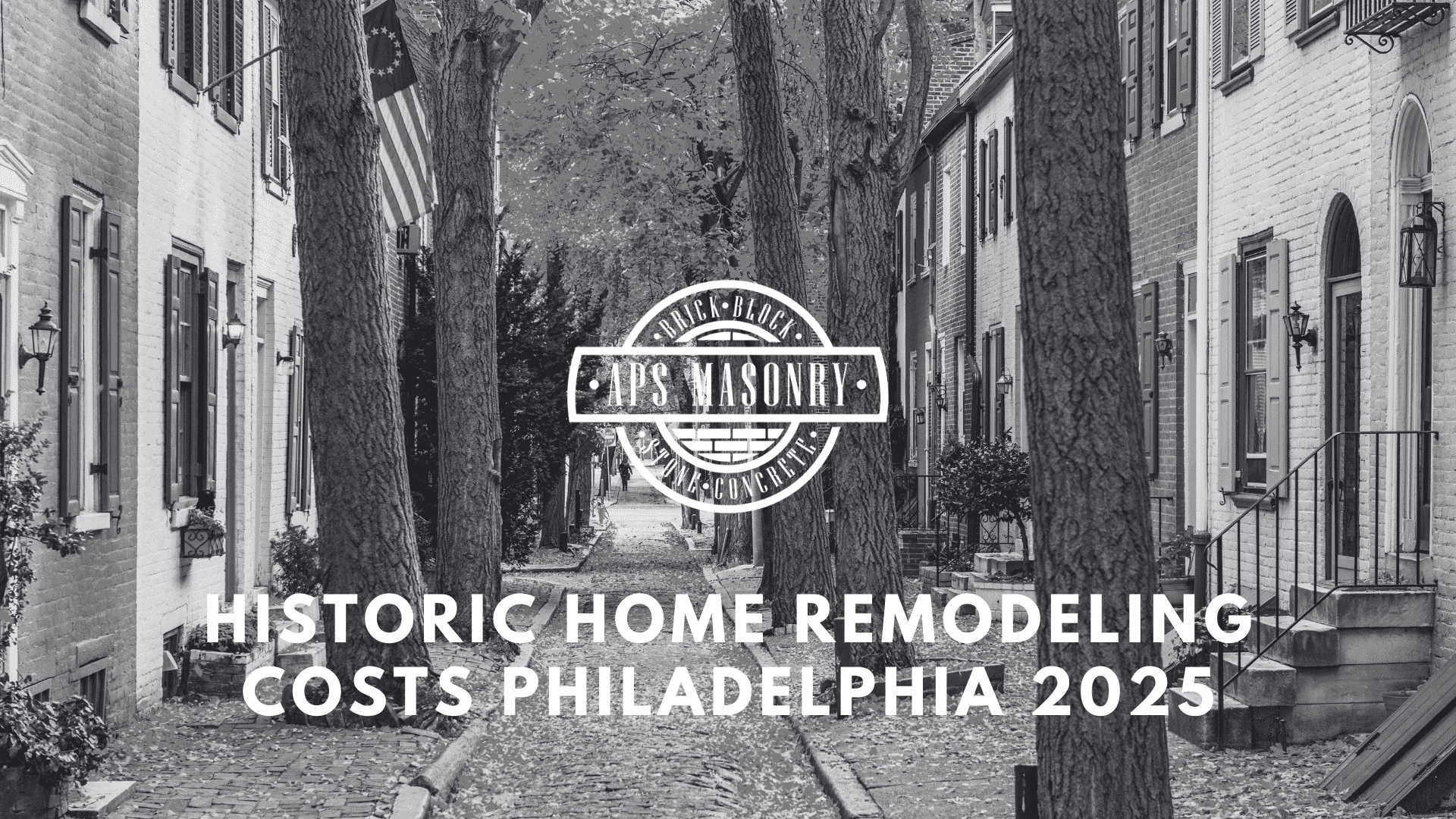
Remodeling your historic Philadelphia home in 2025 just got easier (and cheaper).